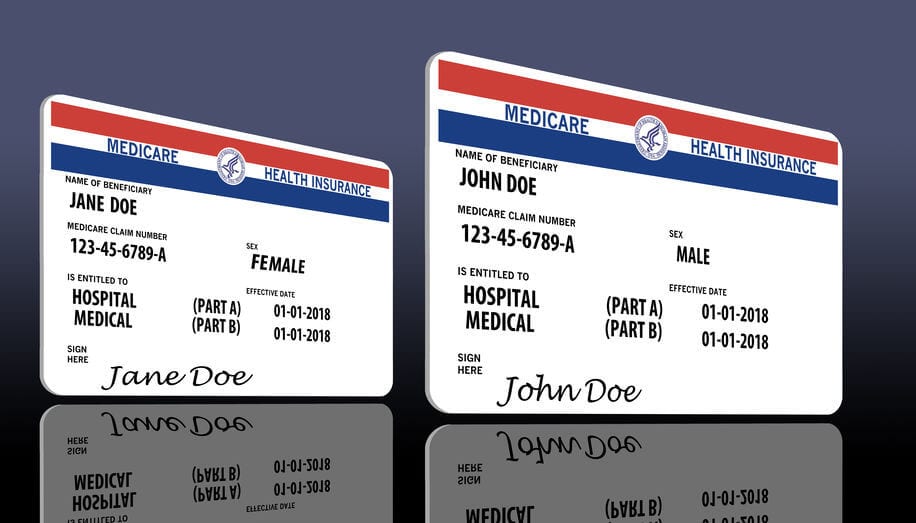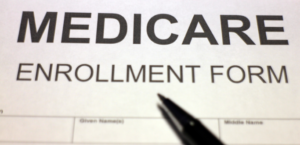Medicare Insurance: if we’re all eligible for it when we turn 65, why does it have to be so dang confusing!? There are so many different plans (hello Medigap!) that all seem to cover something different and all of them seem so important. It can really make a person’s head spin!
But don’t worry–we’re here to help you understand the basics of Medicare plans. We want you to get the coverage you need so we’re here to give you important facts about Medicare health plans.
If you’re ready to conquer your fear of Medicare enrollment, then read on!

What is Medicare Insurance?
Medicare is insurance that people who are 65 years and older get from the federal government. Some people with disabilities or chronic renal failure may also be eligible before turning 65.
Medicare comes in parts A, B, C, and D. Parts A and B are the most well-known plans and they are overseen by Social Security. Parts C and D are sold by private insurance companies and these plans must be purchased via licensed brokers.
Part C plans are now known as Medicare Advantage Plans (don’t worry, we’ll cover that) while Part D covers prescription drugs.  There are also supplemental plans, known as Medigap plans, and we will touch on those a bit as well.
There are also supplemental plans, known as Medigap plans, and we will touch on those a bit as well.
What to Know About Part A
Part A will cover your hospital benefits, including inpatient hospital care, limited skilled nursing care, and some home health and hospice care.
Having Part A coverage is a big deal. Research shows that patients who are 65 years and older account for close to 40 percent of all adults hospitalized in the US. You certainly don’t want to find yourself in the hospital with no coverage!
Luckily, if you are already getting Social Security benefits, then you’re automatically signed up for Part A and you can look forward to receiving your membership card in the mail a few months before your 65th birthday.
Since you’ve already been paying Medicare taxes through you’re employer, you won’t have a monthly premium. You will need to meet a deductible before Medicare starts paying towards your care. Once you’ve hit that deductible, Medicare will pay at 80 percent which leaves you on the hook for the other 20 percent.
What to Know About Part B
Part B is like the main course to Part A’s appetizer. Medicare Part B is your medical insurance, so it’s similar to the health insurance you likely had through your employer. This is the plan you need if you want coverage for doctor’s visits, outpatient care, some preventive care, and some useful extras like lab work and ambulance services.
Unlike with Part A though, you are not automatically enrolled and you can opt-out of Part B coverage. Also unlike Part A, you will have to pay co-pays, premiums and a deductible.
We know that when you’re faced with additional healthcare costs that it’s tempting to opt-out to cut those costs. But you should think twice about that when it comes to Part B enrollment.
You will need basic medical care coverage.
If you don’t have Part B, you will find that paying out of pocket for that care adds up. Also, if you opt out but choose to sign up later, there could be a financial penalty.
What to Know About Part C
Part C plans can be very attractive for many people. They are provided by private insurance companies so you have more choices. They also bundle coverage from all different parts of Medicare into one plan.
You will commonly see Part C referred to now as Medicare Advantage Plans. These plans have all of the same coverage you get with Parts A and B, but can also include vision and dental benefits. This is a great option!
Traditional Medicare does not cover vision and dental care, so they also don’t pay for dentures and hearing aids. And we all know how expensive those can be!
And did we mention that Medicare Advantage Plans also include coverage for prescription drugs? That’s a benefit that used to only be provided by Medicare Part D.
Medicare Advantage Plans can be very cost-effective for the financially conscious consumer. These plans also mean that you’re not having to track premiums and co-pays across multiple plans. For some, these plans are valuable for that alone.
If you’re looking to get the most coverage for your money, it’s worth it to investigate whether a Medicare Advantage Plan is for you.
What to Know About Part D
Part D is probably the most straightforward part of Medicare because it only covers prescription drugs. Before choosing your Part D coverage though, you will want to verify that the drugs you take are covered.
What to Know About Medigap Policies
Medigap or Medicare Supplement Insurance are plans designed to offset your out of pocket costs. This includes your coinsurance (that 20 percent that’s leftover after Medicare pays their portion) co-pays and deductibles. These policies can be great for your financial health, but there are many options so it’s important to talk to a licensed agent that can help you pick one that will save you money AND protect your health.
Are You Ready for Medicare?
Now that you’ve read our quick and simple guide to Medicare insurance, it’s time for you to take the next steps. Whether that means enrolling in traditional Medicare, bundling it all together in a Medicare Advantage Plan, or picking the perfect Medigap option, we’re here to help you navigate all of your choices! Reach out to us today to get started.
















